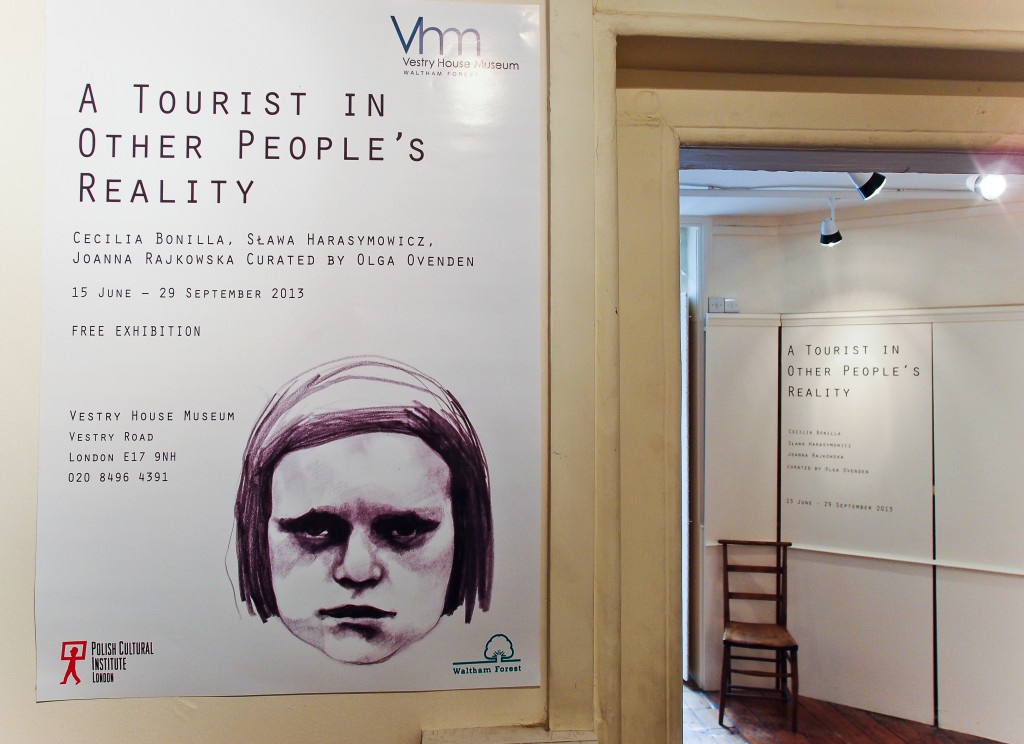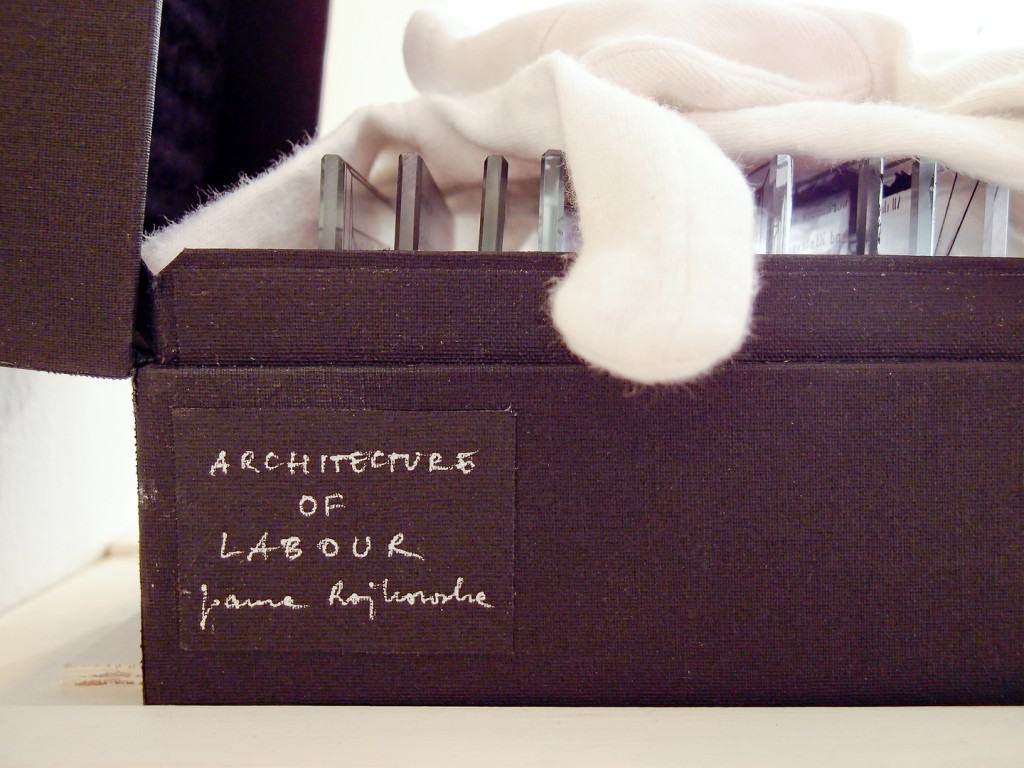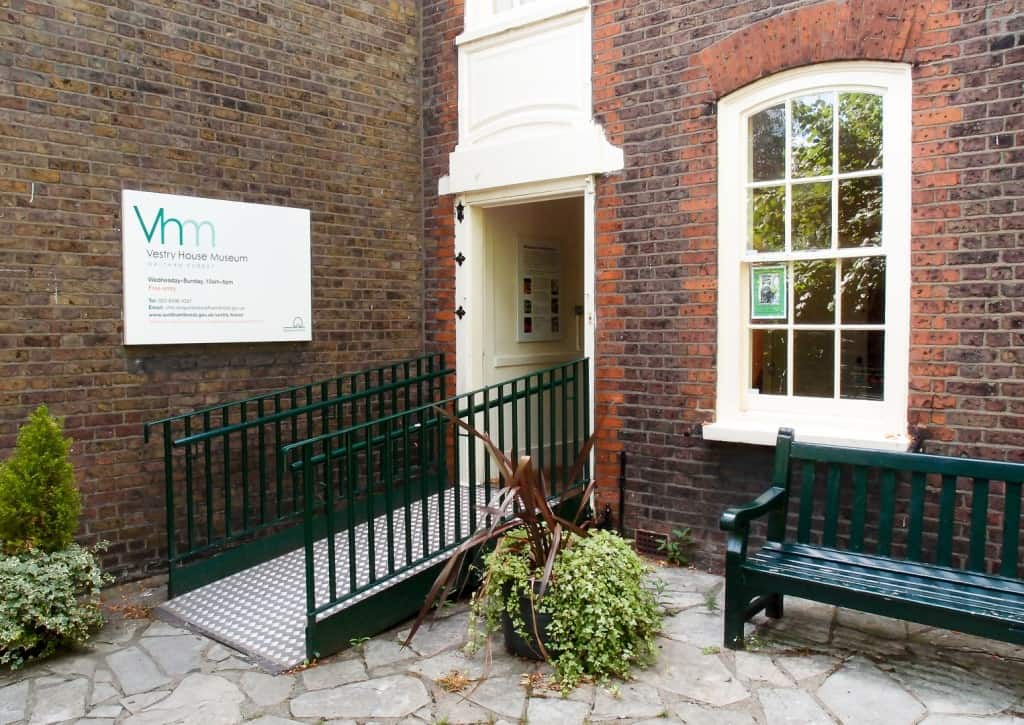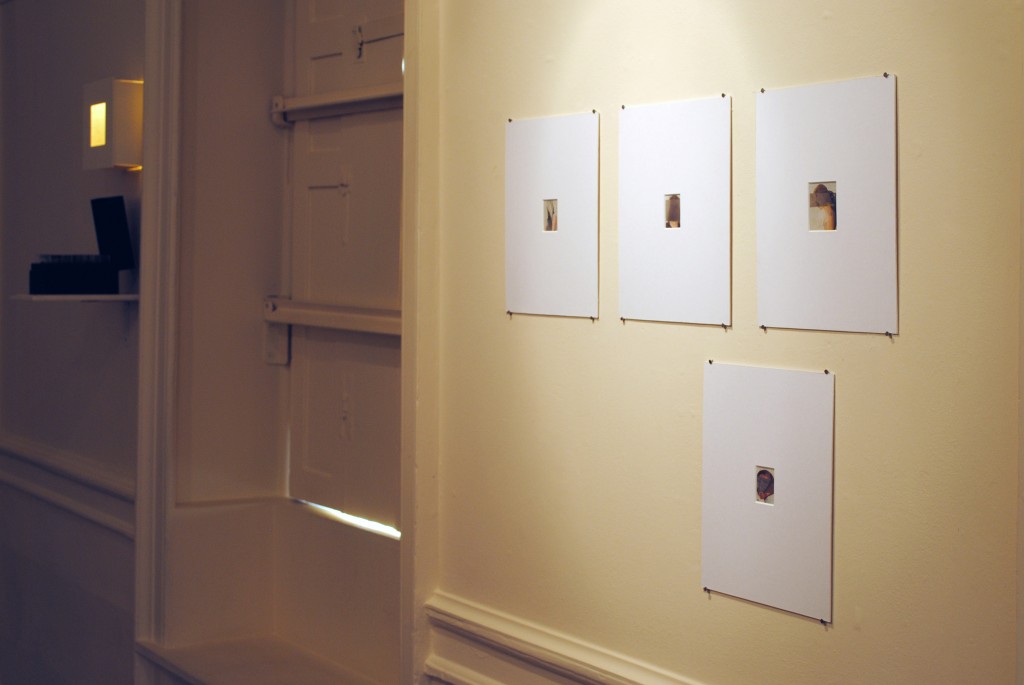“A Tourist in Other People’s Reality” is a group exhibition of three female artists: Cecilia Bonilla, Sława Harasymowicz and Joanna Rajkowska curated by Olga Ovenden. It takes place at Vestry House Museum in Walthamstow in north London. Today Vestry House is a small local museum with a beautiful garden in the backyard. This area – Walthamstow – is full of art-related stories. For instance, near Vestry House there is the magnificent William Morris Museum (re-opened last year), Greyson Perry has got his studio here, English pop artist Peter Blake taught for a time at Walthamstow School of Art. However, Bonilla, Harasymowicz and Rajkowska do not pay too much attention to these big name narratives. They drew their inspiration from stories not directly related to art but taken from the dusty archive of Vestry Museum.
Vestry House was a workhouse in 18th-19th century. The workhouse was a form of social care for the poorest of the poor. The majority of inhabitants were the elderly, single pregnant women, orphan children. In exchange for food and accommodation, they were doing tedious and unskilled work: maintaining roads, taking care of gardens, mending clothes and doing laundry. The conditions were harsh and the rules strict. Everyone above the age of seven had to work “for the use and benefit of Parish”. After 110 years of operating as a workhouse, Vestry House closed its doors to Walthamstow’s poor.

Display view,”A tourist in other people’s reality” exhibition by Cecilia Bonilla, Sława Harasymowicz and Joanna Rajkowska, Vestry House Museum, London, August 2013, Photo Slawek Kozdras for Contemporary Lynx
Bonilla, Harasymowicz and Rajkowska “re-opened” the doors of Vestry House. The artists in their artwork went through the archives of Vestry House to uncover the forgotten stories of those who used to live there. Artists juxtaposed own artwork with archival materials, examined narratives of past lives, awakening invisible and forgotten story of the place.
The exhibition is in one room on the ground floor. The interior preserves its 18th century atmosphere. There’s a sense that time stopped in this house. A single wooden chair placed opposite the entrance, wooden creaking floor, old window frames, ancient showcase; all from a bygone epoch. Against this background, we see collages, drawings on paper, photo-based images on cards, digital projection made by artists and mixed along with archival documents from Vestry House: hand-written letters, newspaper cut-outs, old documents.

Sława Harasymowicz, Idle, Abusive, Unruly, 2013, archival documents from Vestry House, drawings, display cabinet, dimensions variable, “A tourist in other people’s reality”, Vestry House Museum, London, August 2013, Photo Slawek Kozdras for Contemporary Lynx
Accompanied by the sound of old wooden floor, the visitor reads an archival letter describing a case of an extreme child abuse. Next to it, in the same showcase, there is a pencil drawing (made by Sława Harasymowicz) of a young child. It looks like taken from police files. All of them create a disturbing impression. Digital projection (Sława Harasymowicz) placed on the bottom of the wall, presents animated scene showing a woman being drawn.
Every half an hour silence is broken by a strange song sang by a young woman. It is less of a song and more melodic shouting of a mad person. The loud and disturbing song, combined with other artworks, drags the viewer deeper into the past. The room feels haunted by spirits of former inhabitants. The recording is Aleksandra Koziel’s ‘Song from the Workhouse’.
In contrast, right outside the room, there is a beautiful flower garden, where the inhabitants used to cultivate vegetables. The transition from the haunted room to the sunny garden further strengthens the impression of breathing the past – both dark and at times beautiful.
Upon leaving Vestry House, there is a strange, industrial sound of clogs or some sort of turbines from an old factory or mill. It is a sound installation by Joanna Rajkowska, subtly evoking the daily routine of hard work at Vestry House.

Joanna Rajkowska, Architecture of Labour, 2013, glass, wood, light bulb, dimensions variable, “A tourist in other people’s reality”, Vestry House Museum, London, August 2013, Photo Slawek Kozdras for Contemporary Lynx
The title of the exhibition is a quotation borrowed from a famous essay by Susan Sontag “On Photography”. In full: “Essentially the camera makes everyone a tourist in other people’s reality, and eventually in one’s own.” (1977). These three international artists and the curator chose to become tourists in Vestry House and the reality of its previous inhabitants. They – the artists – carefully investigated archival material and tried to reconstruct the past from incomplete scraps of information, such as old letters and documents. They brought back facts and stories from the past by imposing their own way of seeing. They created a patchwork of realities for others to investigate further.
According to Sontag, photography gives equal value to everything. In this spirit, Bonilla, Harasymowicz and Rajkowska found the harsh lives of unnamed inhabitants of the workhouse to be equally interesting and deserving as the successful life of artist William Morris celebrated in a separate museum just a few streets away.
“A Tourist in Other People’s Reality” is open until 29 September 2013

A poster of the exhibition “A tourist in other people’s reality” exhibition by Cecilia Bonilla, Sława Harasymowicz and Joanna Rajkowska. Curated by Olga Ovenden,Vestry House Museum, August 2013, Photo Slawek Kozdras for Contemporary Lynx

View of the garden, Vestry House Museum, London, August 2013, Photo Slawek Kozdras for Contemporary Lynx

Joanna Rajkowska, Architecture of Labour, 2013, glass, wood, light bulb, dimensions variable, “A tourist in other people’s reality”, Vestry House Museum, London, August 2013, Photo Slawek Kozdras for Contemporary Lynx

Entrence to the Vestry House Museum, London, August 2013, Photo Slawek Kozdras for Contemporary Lynx — at Vestry House Museum.

Cecilia Bonilla, Metro, Wednesday, May 29th, 2013, collage on card, dimension variable, photo courtesy of Cecilia Bonilla

Display view,”A tourist in other people’s reality” exhibition by Cecilia Bonilla, Sława Harasymowicz and Joanna Rajkowska, Vestry House Museum, London, August 2013, photo courtesy of Cecilia Bonilla
Cecilia Bonilla (Uruguay/Sweden) studied Fine Art in Florida, USA leading to a MFA at Chelsea College of Art, London, UK, where she has lived since 1999. Through manual intervention and digital manipulation, Bonilla appropriates mass-produced images to produce works in various media. Her practice explores issues such as our relationship with the commercial image, female representation in commercial and mass-media, and the domestic space. Solo shows include National Museum of Visual Arts, Subte Municipal, Montevideo, Uruguay, 2012, and a commission for Haringey Council’s Olympic Art Collection, London, UK, 2011
Sława Harasymowicz (Poland) After receiving an MA from Royal College of Art, London, 2006, she is currently working towards a practice based PhD in Fine Art at Central Saint Martins College of Art and Design, London. Harasymowicz uses drawing, print, lens-based media and installation as processes to express and test conditions of memory and trauma, and the complex relationships between ‘history’, ‘memory’, ‘truth’ and ‘representation’. Her solo exhibitions include Wolf Man, Freud Museum, London, UK, 2012, forthcoming solo shows include Ethnographic Museum, Krakow, Poland, 2014. She won the Arts Foundation Fellowship, 2008, Victoria and Albert Museum Illustration Award, 2009.
Joanna Rajkowska (Poland) works mostly in public domain. She produces objects, architectural projects, geological fantasies, excavation sites and ephemeral actions as part of her widely discussed public projects. Many of them have not been realized, but they work as collective utopias. It includes commissions for Frieze Projects 2012, UK, Forcing a Miracle, 2012, Royal Society of Arts, Citizen Power Peterborough, Arts Council England, UK, The Peterborough Child, project in progress, 2012, 7th Berlin Biennale, Germany, Born in Berlin, 2012. As well as commissions, she has realized a number of partisan public projects, most notably Greetings from Jerusalem Avenue, 2002, in Warsaw, Poland. The publication on her work, Where the Beast is Buried, will be published by Zero Books in summer 2013. She is based in London, UK.
The Vestry House Museum is a local history museum located in Walthamstow Village. The house dates from 1730 and has been used as a workhouse, police station and armoury. The Vestry House Museum presents the history of Waltham Forest through a variety of permanent displays and special exhibitions.










